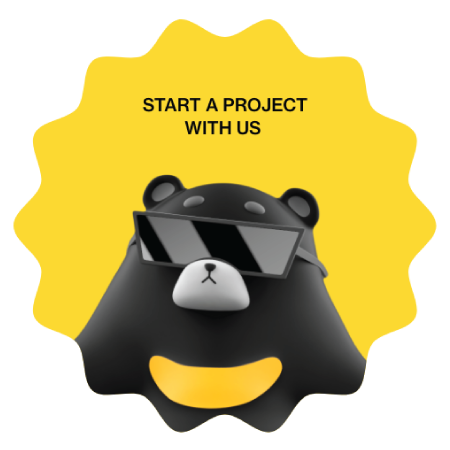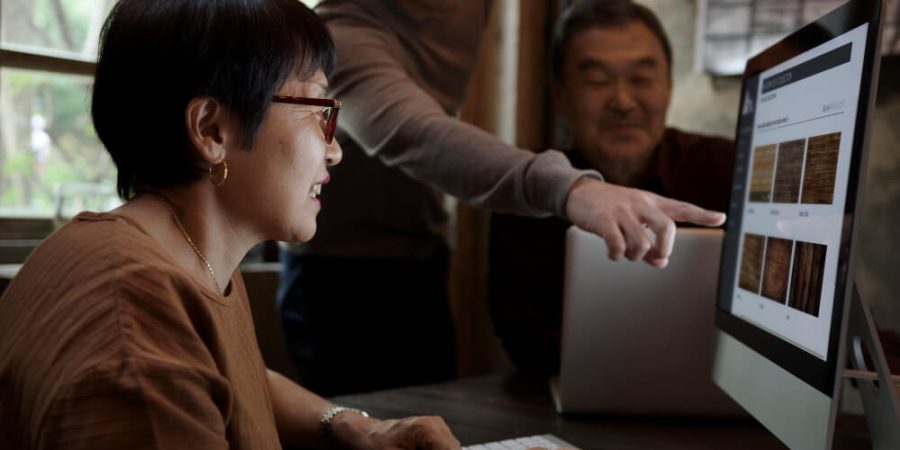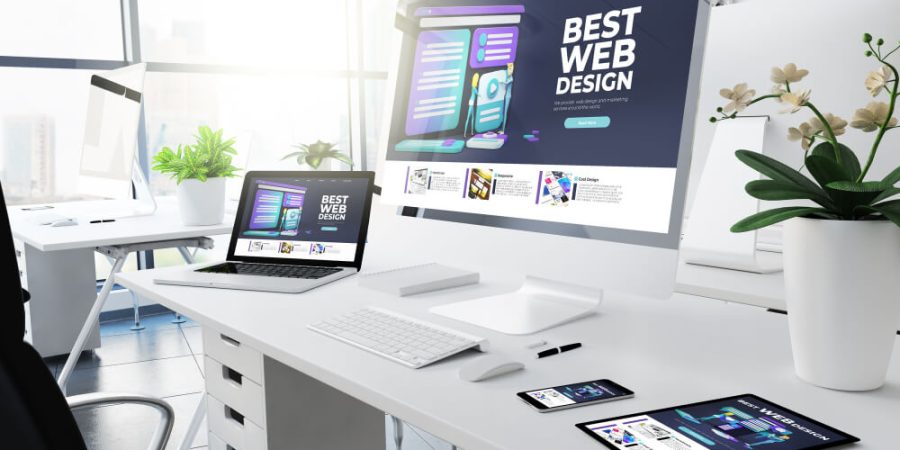Artificial Intelligence (AI) is continuing to grow as a major player in web design. From creating smarter websites that can detect user intent and provide tailored experiences for each visitor to helping developers create more complex, interactive user experiences (UX), AI is changing the way we approach web development.
What is Generative AI Design
Generative AI design is a computer-aided design technique that uses AI to optimise the design process. Engineers or designers in fields such as architecture, aerospace, and construction use it to quickly generate a wide range of design ideas based on their predefined criteria.
Generative AI for Web Design
Generative AI is revolutionising the way we design websites, making it easier for businesses to streamline their workflows, improve user engagement and stay ahead in the ever-rapidly evolving digital landscape. AI engines can automate complex processes, create personalised online experiences and enhance design efficiency.
This, in turn, will accelerate development and enable data-driven decision-making, ensuring the creation of responsive, accessible, and visually engaging websites tailored to user preferences.
How Is AI Used in Web Design?
In recent years, web designers have been experimenting with AI to improve the web design process. AI is enabling designers to create sites that are not just visually appealing but also intelligent.
AI-powered tools create websites that adapt to user behaviour, preferences, and needs. Thus, designers can now deliver a more personalised user experience to visitors, leading to increased engagement and conversions.
AI in Modern Web Design Trends
AI has found use in many modern web design trends:
- Creation & planning: Website design tools like Canva have embraced AI as a means of planning and strategising web development. Features aimed to simplify creation, boost productivity, and enhance creativity have made design more accessible and efficient for users of all skill levels.
- Layout generation: AI machine learning engines can now help automatically generate layouts, colour schemes, design templates and even entire websites that are functional, visually appealing and optimised for search engines.
- Personalised user experience: AI algorithms can process vast amounts of data in real-time, allowing designers to create more personalised user experiences, including personalised content recommendations, tailored layout changes, and even product suggestions.
- Personalised user experience: AI algorithms can process vast amounts of data in real-time, allowing designers to create more personalised user experiences, including personalised content recommendations, tailored layout changes, and even product suggestions.
- Chatbots: Chatbots are becoming a standard feature on many websites. These AI-powered virtual assistants provide instant and individualised answers to users, saving them time and generating more sales through their active participation.
- Visual recognition and search: AI algorithms can identify objects and features within images, leading to vast improvements in visual search engines. This is especially useful for eCommerce platforms where users may want to find products similar to those they have seen in photos.
- Accessibility: AI-powered tools can scan websites to identify accessibility issues, like poor contrast or missing alt text and automatically correct them. This enables the creation of more inclusive sites with content that is accessible to everyone.
- SEO:AI content generators can be used to generate SEO-focused content, boosting your site’s visibility and search rankings. AI algorithms can also analyse web content to recommend SEO strategies and keyword recommendations.
Benefits of Using AI for Website Design
AI has brought a plethora of benefits to web design:
- Personalisation: As mentioned above, AI can help tailor a more personalised user experience for your website, basing features on visitors’ browsing history, location, and preferences. This ensures that every user gets a relevant, customised experience.
- Speed: AI can automate repetitive tasks, such as resizing images, optimising code, and formatting content. This saves designers time, which they can use to focus on the more creative aspects of web design.
- Data analysis: AI can analyse user data to identify patterns and trends, helping designers make more informed decisions, find problems, and suggest ways to fix them.
- User experience: AI can create a more intuitive online UX by analysing user behaviour and making appropriate adjustments on your site, increasing engagement and conversion rates.
Is AI Replacing Web Designers?
Understandably, many web designers fear that AI will completely replace them. Reasons vary, though the common assumption is that AI is cheaper and will perform all the same functions more quickly and efficiently.
The reality is that AI is an accompaniment, not a replacement, for human web designers. Although AI has made huge strides in recent years, there are still gaps that human knowledge and oversight can fill. Human designers are invaluable in quality control as they are much better at detecting errors and biases made by AI algorithms. Thus, they can make corrections that the system can learn from.
By fostering collaboration between human designers and AI, we allow for continuous improvement and ensure that generated content fits our quality expectations and specific needs.
How Do I Use AI to Design My Website?
Here are the steps to designing your website with AI:
- Gather essential information: Conduct research into your brand’s aim. Consider basic factors like your site’s purpose, your intended audience and the product/service you’re selling.
- Choose an AI website builder: Using an AI website builder is one of the simplest ways of using AI to design a website, as it lets you construct a website without any coding knowledge. When choosing your website builder, make sure to assess factors such as your budget, customisation options, and AI maturity.
- Gather data with AI: You can get web design inspirations using AI. Such tools will visualise ideas based on your exact criteria. This data can then be used to refine branding elements such as your business name, logo, and colour scheme.
- Include AI-generated content: AI can speed up the development of text, images, and even video, making it easier to include engaging content on your website.
- Optimise your SEO with AI: AI-powered tools can comb through other sites to find high-ranking keywords, offering dynamic recommendations and suggesting SEO-optimised title tags and meta descriptions.
- Add AI-powered UX features: Adding AI-powered UX features (e.g. product recommendations, chatbots, etc.) to your website will enable you to create a more personalised experience tailored to your visitors’ preferences and needs.
6 Best AI Tools for Website Design
Here are the 6 most popular AI tools for creating websites in Malaysia:
- Research: Keyword research
- Content creation: Natural integration of keywords and internal links
- Development: SEO-friendly coding
- Testing: Mobile optimisation
- Launch and maintenance: SEO-focused layerings
What Is Included in the Testing Phase of Website Design?
Here are some common elements of the testing phase:
Canva
Canva’s AI Magic Studio offers a user-friendly way to create professional-looking designs without needing coding experience. Canva provides step-by-step tutorials and drag-and-drop features that make it easy for beginners to use. Additionally, the program helps you choose the right options for your website and enables you to work with your team in real-time.
Figma
Figma AI is a collection of features designed to help you work more efficiently and creatively. It uses data from public, free community files to train models and fine-tune features like Visual Search, Asset Search, and Make Prototype, ensuring that they learn general design patterns and Figma-specific concepts and tools.
Uizard
Uizard is an AI-powered user interface (UI) that makes visualising new website designs quick and easy. It features a text-to-UI generator that brings product ideas to life, an easy-to-use drag-and-drop editor, and the ability to collaborate with your team in real-time.
Adobe Sensei
Adobe has been delivering innovative generative AI solutions for various businesses, including web design. The Sensei GenAI service uses multiple large language models (LLM) to generate and modify text-based experiences for brands. Additionally, it uses a rich data set to train generative AI models on proprietary customer insights, creating content customised to specific audiences.
Midjourney
Midjourney is a GenAI service and program focusing on creating generative art using AI. It uses machine learning-based image-generation techniques to transform natural language prompts into visuals. It works entirely through the Discord chat app, making it accessible to people without access to specialised hardware or software.
Claude
A next-generation AI assistant, Claude is trained to provide a safe, secure, and accurate means of visualising website designs. Its Artifact feature enables you to draft and iterate on websites, graphics, documents, and code on a chat. These chats can then be shared with your team to spark better ideas and move work forward.
What is the Future of AI in Web Design?
AI is constantly evolving in new and exciting ways, from intelligent virtual assistants to dynamic user experiences. By embracing AI-powered web design, designers will be able to create websites that are not just aesthetically pleasing but also provide engaging, memorable experiences for visitors.
At the same time, we must also balance AI with human knowledge and skills in order to create quality online content that is both visually appealing and functionally intuitive, generating leads and income for your brand.
Start an AI Web Design With BikeBear
As the best web design agency in Malaysia, BikeBear offers everything you need when it comes to AI in web design. Our dedicated team of professionals will provide you with vital knowledge of AI web design, giving you a better idea of how to implement AI-powered tools in your website’s development.
Contact us now and start learning how to design intuitive websites with BikeBear.





